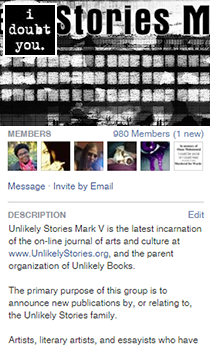Frozen butter and the Fedaii
The story of Arash Pouyan
Chapter 14
Earlier this year, February 8, marked the 52nd anniversary of the Organization of the Iranian People's Fedaii Guerrillas' first armed action. Known as the "Siahkal Incident," or simply "Siahkal." A band of nine guerrillas stormed the gendarmerie station in the small Northern town of Siahkal in Gilan to free a comrade who was captured earlier that day. They killed two police officers but their comrade was nowhere to be found—he had already been transferred to prison. The guerrillas retreated into the mountains with a newly-acquired cache of arms—without a single casualty. But then things turned.
For the next 48 hours the guerrillas suffered a severe and unexpected bombardment, not only from the bigger Gilan police force but also the army, equipped with helicopters and bottomless ammunition.
Out of the 22 members of the organization, only five survived.
Although the attack in Siahkal decimated the Fedaii, it marked a turning point for the movement against the Shah. Dissidents had finally taken up arms against the state. Instead of being cowed, the Shah had given impetus to the resistance and inspired more people to fight—this time with arms in hand.
But earlier this year in February there was another anniversary.
February 11 marked the 44th anniversary of the Islamic Revolution. And as is customary on the anniversary, seemingly as an act of benevolence and compassion, the Islamic Republic pardoned or commuted the sentences of several prisoners, including some political prisoners. Including recent protesters from the movement sparked by the death in custody of 22-year-old Kurdish-Iranian Mahsa Amini on Sept.16, 2022, who was arrested for allegedly not wearing her hijab properly.
On the anniversary of Amini's death, the Iranian people, once again protested. In Tehran, Mashad, Ahvaz, Lahijan, Arak, and Senandaj. And the Iranian government once again responded with repression. But just like last year, the people didn't quit. The protests continued even after the anniversary. Arrests were made. Protesters were shot and beaten. Most certainly, however, government security forces were also beaten.
Although the countrywide protests have all but ceased in their regularity and intensity, the Iranian people have not become apathetic or hopeless. Even in the face of a year-long deadly repression.
The number of protesters arrested and killed (not just executed in prison) since last year varies according to different sources. Between 500 to more than 750. And 20,000 to 30,000 have been detained or arrested.
Mohsen Shekari, who was 23 years old, was the first protester to be executed. He was arrested on Sept. 25, 2022 for allegedly attacking two members of the Basij paramilitary group associated with the Sepah. He was then hanged the following month, publicly, which was broadcast by state television to intimidate protesters.
But they didn't stop.
On November 17, protester Majidreza Rahnavard also allegedly attacked Basij members, killing two. He was arrested two days later and on December 12 became the second protester to be executed. He was also 23 years old and like Shekari his public hanging was used as a tactic of intimidation.
But, again, the protests didn't stop. If they were intimidated, they hid it very well.
On January 7, two more protesters were hanged. Mohammad Mehdi Karami, who was 22 years old, and 39-year-old Seyed Mohammad Hosseini.
But women continued going out in public without hijabs. Both men and women continued knocking off turbans from the mullahs, spray-painting anti-government graffiti on the walls, setting fire to state infrastructure and propaganda and clashing with state authorities. But the rebellion wasn't limited to the youth. Workers got involved, specifically oil workers who came together across the country in Tang e-Bijar, Gonabad and Bushehr to go on strike for better wages. The workers in Bushehr even held demonstrations in front of the Pars Oil and Gas Company.
And then on September 14 of this year 21-year-old protester Milad Zohrevand was executed for allegedly murdering a member of the Revolutionary Guard in last year's protests. He is said to be the eighth person (some say ninth) killed in connection with last year's protest, but the number seems too small.
Still, "women, life, freedom!" continue to echo across the world. And so too has "Death to Khamenei! Damned be Khomeini!" and even "I will kill him who kills my brother!" Protesters shout that the regime cannot arrest or kill an entire population of 85 million, especially when the majority of the Iranian masses suffer from crippling economic inflation, a worthless and quickly devaluing currency and a failing and desperate state.
But what about Siahkal—and the Fedaii?
They have dispersed and escaped to all four corners of the world. These guerrillas with their ideology, albeit eclectic. These guerrillas with their secret underground networks, albeit fatally flawed, who once carried out armed actions against the Islamic Republic (and before that, the Shah). Some survivors, it is said, carry on with some sort of political work in Europe and maintain politically-sympathetic websites. Others disappeared, sometimes willingly, into the mundane middle-class comfort in Europe or America. But most? Most are dead, and with them gone are the invaluable lessons for today's movement in Iran and the future generations of protesters.
The centuries-old conflict between oppression and resistance creates important lessons, things to repeat and not repeat or to augment and improve. Siahkal.
But with or without strong links to past generations, bloodied with experience, the movement's tide ebbs. It's the nature of things.
Perhaps it could be argued the young Iranian protesters of today are more fearless. Braver than their Che Guevara-esque predecessors. Because, in many ways, they have to start from scratch, without any political mentorship or clear ideological continuity. But, perhaps, therein lies the positive.
The future for the Iranian people is arduous and violent, but it is not without hope and heroism. Like Siahkal. So maybe there is continuity after all. While people like Arash, Masoud, Jalil and Amir are no longer around, maybe their sacrifice and martyrdom were never exclusive to one or two political factions. Maybe it is something else. Something that belongs to all people, not just in Iran, but across time and space. The history of Iran has not ended; it keeps taking and giving. Because when history takes away people like Amir, it also gives us new people. Like Mohsen, Majidreza, Mohammad, Seyed, Milad and Mahsa.

Facundo Rompehuevos is an activist, writer, husband, father and recovering alcoholic and drug addict born and raised in the San Fernando Valley. He writes poetry, fiction and nonfiction. His work has appeared in zines and literary magazines and poetry journals, such as Rusty Truck, A Thin Slice of Anxiety, The Rising Phoenix Review, Red's Not White and Delirium. He has two books of poetry: Irreconcilable Contradictions (2017) and Grabbing the Stars from the Sky (2021), both published by Fourth Sword Publications. He is currently working on his debut novel and a collection of short stories.
You can find him on Substack at facundorompehuevos.substack.com.

Arash Pouyan was born in 1966 in Tehran. By the age of 12 he participated in the 1979 Iran Revolution. Later on he was arrested for his participation and support of the Fedaii. After three years as a political prisoner, he was released and left to Europe—where he continued his political activism against the Islamic Republic. Afterward, he moved to the U.S. He returned, briefly, to Iran in 2009 to participate in the Green Movement. Today, he continues to keep up to date with the popular movements not just in Iran but all over the world.


